Abstract
According to the tourist report, the city of Bath is a wonderful city that offers a rich history, beautiful architecture, and great traditional heritage. The Roman Baths; the medieval core; and the Georgian crescents and squares have allowed Bath to gain World Heritage status and this combined with the retail offer and overall environment has allowed Bath to become an important tourist city.
As things stand out the city of Bath has lost its glory as it used to be before. Due to underdevelopment the city and its environment are decaying hence losing their appeal which has also been brought about deterrent underinvestment. Development has proved difficult due to poor public monopolistic policy rendering the city of Bath at risk of declining hence losing to its key competitors like Oxford and Chester (McElroy 2021, pp.92-106).
There has been great resistance to change at the city of Bath, but courtesy of the Vision for Bath process, there is a growing phenomenon in the belief that something must be done. The Bath economy is mostly deeply dependent on the tourism industry, of which it is experiencing decreasing tourist numbers. There are still are collaborators in the city and yet much of the built environment and public realm is in need of substantial investment. A substantial part of the city currently is below what would be expected of a World Heritage Site and this is making the city of the Bath lose its position as a World Heritage Site.
There is a predominant inadequate job opportunity for career growth and development in the labor market brought about by expensive housing facilities making it unaffordable by the low wages income earners, the dominant tourism, retail, and public service sectors. There is a danger that these myriads of problems will keep away walking Bath residents hence seeking employment opportunities in other jurisdictions. There is, therefore, a great concerted effort to ensure that these issues are well addressed otherwise the city of Bath stands very high chances of being rendered a historically interesting offshoot of a Greater Bristol with little vibrancy, community, or wealth-creating economy of its own.
The transport system is mostly centered on a bus-based network and pedestrianization according to the management plan. Tourism is managed by Bath Tourism Plus which is an independent company. The Destination Management Plan has been updated by a Destination Marketing Strategy for Bath, which aims to enhance growth in the value of tourism rather than in volume. The brand is one of the most paramount assets that a company can ever have. Branding at the destination city Bath has been done to deliver a brand’s distinction.
Introduction
In early 2005 B&NES Council designed and developed future approach for the city of Bath. The development of ‘Vision for Bath’ and the wide communication method by the B&NES Council has led to the development of a mutual agreement within the city and brought numerous tangible changes. The business strategic plan was undertaken to validate and challenge the original vision, whilst the analysis sets out some strategies for developing the overall economy and regenerating the city for both residents and tourists. When the conclusion was drawn, the Business Plan converted the results into a tangible development plan, a spatial interpretation of the scheme, and a financial model to test overall workability. By carrying out the process in this manner, the plan reflected the social and economic needs of the city and created a result that retained the essential characteristics of Bath. The approach ended by conducting the financial usefulness of the scheme and making some recommendations (Fisher, et al. 2019).
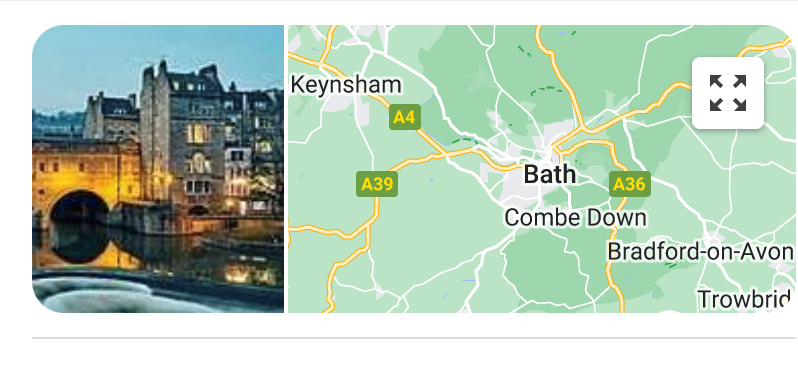
Background Information
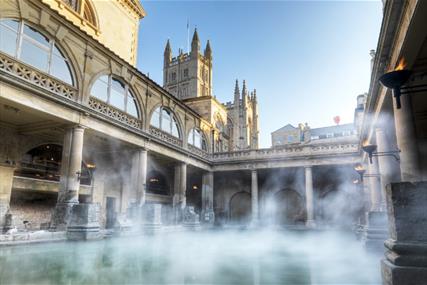
The city of Bath is believed to have been founded by the Romans as a thermal spa due to its hot springs and appeared as a useful place for the wool industry in the Middle Ages. During George III around the 18th century, Bath develops to become one of the most graceful and stylish cities. The city of Bath has an extraordinary versatile significance in a number of the cultural traits like The Romans remains, especially the Temple of Sulis Minerva and the baths complex (based around the hot springs at the heart of the Roman town of Aquae Sulis, which have remained at the heart of the city’s development ever since) are amongst the most famous and important Roman remains north of the Alps, and marked the beginning of Bath’s history as a spa town (Paddeu, 2017).
The Destination city of Bath has stood out to be into one of the most beautiful cities in Europe, with architecture and landscape combined uniformly for the enjoyment of the spa town’s cure takers due to Georgian city which reflects the ambitions of John Wood Senior (1704-1754), Ralph Allen (1693-1764), and Richard “Beau” Nash (1675-1761). Public buildings like the Assembly Rooms and Pump Room have a Neo-classical style that harmonizes with these well with grandiose proportions of the structural ensemble like Queen Square, Circus, and Royal Crescent which all showed great potential, especially the spa city in the 18th century (Warner 1801).
Georgian premises had a great portray and attraction of Palladio (1508-1580) and their collective scale, style, and organization of the spaces between buildings epitomize the success of architects. Some of these are John Woods (elder 1704-1754, younger 1728-1782), Robert Adam (1728-1792), Thomas Baldwin (1750-1820), and John Palmer (1738-1817) in transposing Palladio’s ideas to the scale of a complete city, situated in a hollow in the hills and built to a picturesque landscape aestheticism creating a strong garden city feel, more akin to the 19th-century garden cities than the 17th century Renaissance cities. Bath has high standards for architecture and urban design, its visual uniformity, and its beauty is largely a testament to the skill and creativity of the architects and visionaries of the 18th and 19th centuries. These applied and developed Palladianism in relation to the specific chances offered by the spa town and its physical environment, and natural resources specifically the hot springs and the local Bath Oolitic limestone (Stamataki and Kjeldsen, 2021).
Structures that surround Bath’s urban and landscape spaces lead to the creation of well-connected spaces auger in so well naturally bringing in the green environment suburbs hence outlay of garden city feel as designed by town planners in the 19th century. Roman and Georgian are memorable times for the city of Bath as they brought great significance which over time had great development. This is evidenced during spectacular medieval Abbey church sat besides Roman temple and baths within 18th century and the modern-day city. Like any other current city, there is a high likelihood for the destruction of the city of Bath garden city feel brought about by high pressure for high development and transport system.
The hot springs are well maintained and governed bringing an appealing view. While the main remains of the Roman are kept in good conditions, well guarded, and viewed in a museum set up which makes Roman’s Baths be widely accepted for their originality. The continuous inhabitation since the construction of the majority of the large stock of Georgian buildings has really enhanced retention of the topmost level of the original fabric (Hammond, 2017)
Macro Environment for city of Bath
For survival and remaining productive it is crucial for the city of Bath to access its marketing environment. There are several macro-environmental factors facing Bath which are political, economic, social, and technological. The firms should always be aware of some of these macro-environmental factors even before venturing into a particular country. This will help the business to reduce some of the unforeseen circumstances and dangers that may result from that industry.
Political, legal, and regulatory factors
This is mainly concerned with how the state deals with such issues that will affect the firm’s nature of operations and its core plans. There are different players in the political environment including civil societies, the government through its various agencies like the executive, judiciary, and the legislatures. These play a key role in determining such laws as environmental factors, inflations, employment requirements, taxation laws, occupation and safety laws, minimum wage bills, minimum wage pay laws among others. At city Bath, the government has relaxed in determining the minimum wage for the low levels employees, and the housing rent. Most of the employees are working and commuting daily being unable to afford the house rent in their nearby houses. The council is the one in charge of managing the investment but currently facing financial distress making it difficult to invest more, repair dilapidated houses, and manage public transport (Sun et al.,2020).
Economical factors
The economical factors are highly affecting the consumer purchasing power, with others facing such challenges as high commodity prices, wealth per capita among others. Value for money is a significant factor to most consumers and this determines their expenditure patterns. Most consumers especially the poor people are finding it difficult to afford recreational services and shopping in the city of Bath. This is greatly affecting the city of Bath’s revenue since they mostly target high-end expeditors. This is greatly affecting the domestic and the international visitors on their spending on luxuries like tourism.
Social factors
There are social issues like the customs, norms, population, gender, traditions, lifestyles, and preferences playing a critical role in the tourism industry. These are having devastating effects on the city of Bath and so the management needs to put them into consideration to remain competitive in the industry. Most of the tourist visiting the city of Bath is elders and very few youths. Individual population’s size, race, religion, occupation, gender, and education are also contributing a lot to the city of Bath. The high population of students studying at the University of Bath should be highly encouraged to invest and spend at the Bath. Seasonal variations, traveling modalities, and competitions from other players are affecting the number of visitors at the Bath. Management should put in place measures and strategies to address these issues (Baches, 2018).
Technological factors
Like any other firm, the tourism industry is also affected by the new technologies which keep on creating new products and market changes. New visitors especially the young generations are searching for information about a particular product online. With a click of a button, most visitors want to make inquiries on available food, accommodation, travel arrangement, safety, and the cost of services among others. The tourism business needs to be well equipped with the knowledge and the expertise about the internet and its applications. The city of Bath has invested in online platforms, newsletters, and social media platforms to reach a pool of its customers.
Microenvironment factors
The microenvironment consists of forces that are close to the firms and make them unable to serve their customers. Some of these microenvironment factors are the firm’s capital base, competencies of staff and the capability of the management, firms’ goals and objectives, customers, stakeholders, and competitors. The city of Bath is faced with financial challenges to expand on its tourism industry just like other firms. This is making Bath almost lose its long enjoyed glory of a world heritage center. Stiff competitors from other players like Oxford, Chester among others are keeping most of the potential visitors away.
Branding
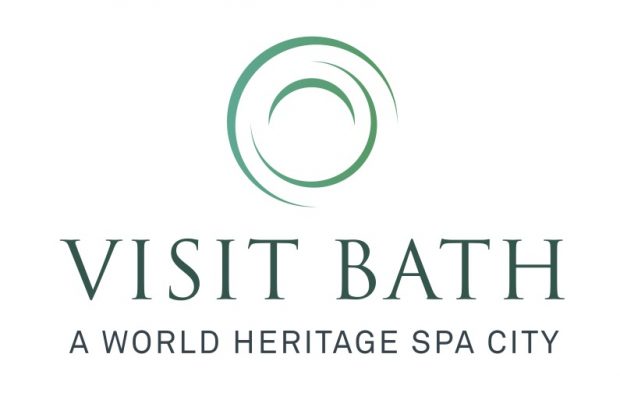
The city of Bath has been in the process of rebranding itself by positioning and surrounding and as the go-to organization making it on a global map at a local, national and international level. This aims at redefining and strengthening the city of Bath to become a competitive identity and ensuring that it has a strong, consistent brand and is well recognized by its members, partners, visitors, and the local community. This will make the city of Bath become the market leader thereby the destination of choice when visitors are doing research and making the booking to their trip to Bath. According to UNESCO (2017), the city of Bath branded as a world heritage spa city portrays a unique selling point of the UNESCO status and the thermal spa offering. The new branding shows an iconic historic architecture, a distinctive, independent-minded place, and a charming, unique, and glamorous destination; classical but with a contemporary twist. The reason behind this is to represent the source of Bath’s thermal waters bubbling up in ever-decreasing circles within the Roman Baths and to represent the iconic crescents and the distinctive Circus. The choice of color and design shows the rolling hills surrounding the city (Ong et al., 2021, pp.2338-2348).
Marketing and communication strategies
The city of Bath has been advertising itself through the media like the Television Sets, Radio, website, newsletter, and social media account. The city of Bath capitalized on the use of digital communications as a marketing strategy. This led to using the UK’s best working websites, great use of newsletters to several databases, and an actor with well organized social media program for the tourist. Targeting different categories of users has been the utmost goal and objective to promote continuous messaging to reach them on daily basis. The Bath consumer marketing brand has been operating under the Visit Bristol and Visit Bath brands which include the visitBristol.co.uk plus VisitBath.co.uk websites. There are also several branded newsletters and social media channels both on Twitter, Instagram, and even Facebook. This promotes eye-capturing news content, with business groupings and themed pages easy identification of a market niche (Bindhu, 2017).
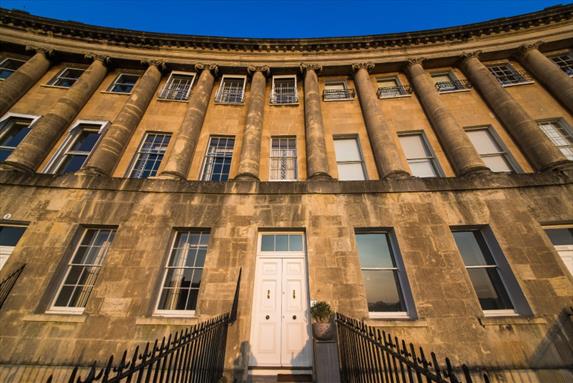
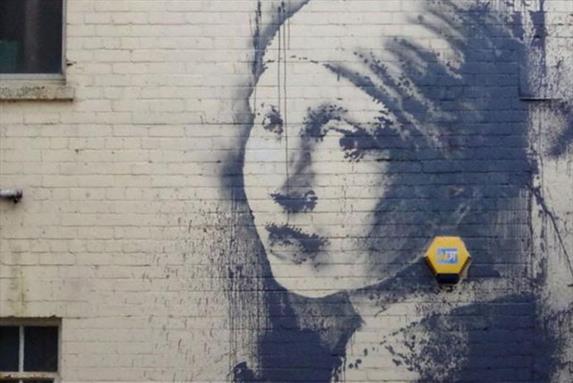
With reliable availability of water, the city of Bath stands out as the only natural thermal hot spring in Britain one can take a shower in. The unique and very accommodative tourist appealing center with eateries and finest independent shops in entire Britain makes it an ideal stopover. The wonderful collection of museums and galleries brings about a good entertainment joint full of year-round festivals, theatre, sports, and music. There are plenty of beautiful sceneries like the Longleat Safari Park, Stonehenge, and Avebury among others.
As a way of the personal selling city of Bath tend to employ locals and tourist as brand ambassador by actively encouraging word of mouth and social media engagement. An encouraging and well-designed promotions offer of the city center plus annual Festivals and Events program plays a critical role in extending seasons and filling off-peak capacity. As an advertising tool Bath will venture into routine friendly welcoming of tourists by providing appealing marketing resources, updated digital information, and high-class Tourist Information Hub (García-Hernández, la Calle-Vaquero and Yubero, 2017).
Tourism attraction remains the epitome of the economy for Bath and its environment. There is every concerted effort to promote the value of tourism to bring out economic progress by using several marketing strategies. According to a 2014 report by Bath, it sets out clear plans and strategies to boost tourist attraction thereby promoting the economy. Bath aimed at creating and developing destination stopover in the home market while maximizing trends at domestic by increasing daily tourist by 12% annually to reach £118m by 2014. Bath also intends to increase the value of high-end international tourists by 12% to reach £83m in 2014 targeting those from Europe, the US, China, Asia among others. City Bath is concerned with increasing the value of the day visitor market by 12% while that of business tourism growth by having more delegates annually to a tune of 9% (Lovell, 2019).
On a global map, The US has been the main prayer with others like Australia, European countries and the Far East are also becoming partners. The elegant sceneries at Bath have made it receives an international reputation for its calmness with a good place for recreational services. With increasing competition from Oxford and Chester, there is every desire to put more effort into promoting the heritage and culture at Bath. Bath enjoys a wide pool of loyal customers who are older age groups, youths, spendthrift customers, and fashion-sensitive tourists.
With a high influence of some emerging factors like the ever-changing economy and technology that currently guides on expenditure and destination sites, the city of Bath needs to up its game to outdo its competitors by investing heavily in its goods and services plus marketing budgets. The increased competition in most tourist attraction centers on leisure time in an uncertain economy needs to be well incorporated into the business strategic plans. Bath has been doing well in the business productivity which left it tourist spending little individually however slowing down its growth. Bath has been on a trajectory path to overcome these challenges by investing more in areas of high growth like the spendthrift market and holidaying at domestic (Borsay, 2019).
Strength
The city of Bath is widely known as a World Heritage center and stands out as the only one across the whole UK to enjoy such an identity. Bath enjoys a well set and performing tourist economy, has documented events of culture and festivals, and it also has a strong mix of several retails and own provisions that have placed it top of the industry. Having a strong culture and enjoying the good reputation of the Bath led to the creation of a city well known for good things. A strong culture of artisan traditions provides alternative medicines, designs, arts with a good council enjoying reaping huge returns from the ancestral and ancient assets of things. The University of Bath is top-ranked in the UK universities with establishment also of University and College of Further Education and has a standing culture for sports by having well established recreational facilities in the UK like the Bath Rugby Club that tops in the premiership of the Rugby Union Club (Pavlić, Portolan and Puh 2020).
Weakness
This however comes with several weaknesses for the Bath. Some of the main weaknesses for the Bath include declining wages and a monopoly of the public sector leads to limited creation of wealth around the city. Bath also faces a declining wage economy in comparison with other towns and states within the South of England, with a performing hospitality industry that is costly and becoming obsolete. Affordability of housing is a major problem in a low-wage economy, there are also poor sceneries in some public utilities and the well-established environment is getting dilapidated hence reducing the city of Bath from a World Heritage Location. Financial challenges are facing the B&NES council rendering it difficult to tap into new wide capital intensive projects (Rasoolimanesh et al., 2017).
The challenges are immense since the transport industry within the city has been fully exhausted whereby any new venture stands high chances of creating congestion within the industry. B&NES council and other key players failed to have a better modern plan for the city leaving it with poor marketing of the city and inconsistent messaging regarding the city of Bath.
The imbalances between high house prices and low wages, coupled with inadequate competent quality private sector employers, bring inconsistencies in the development of the community. Bath can so wish to provide a residential base for the wealthy but the declining economy currently provides few chances for potential individuals to create this wealth. Low-wage workers are increasingly forced to live out of town and there are few opportunities in the city for those who graduate at the Universities of Bath. This makes Bath provide almost nothing to promote the next generation of wealth creators (Shtudiner, Klein and Kantor, 2018).
There is a worrying trend of the decline in the number of tourists visiting the city of Bath. The tourism economy is of great significance to the city of Bath. Tourist spending across the retail sector encourages a retail offer that far exceeds the offer which would be expected for a city the size of Bath more so in regards to its nearness to Bristol. Tourists and new entrants mostly contribute a substantial amount of the revenue which is useful to the council investment in other projects and provision of services. If the number of tourists and the new entrants keeps on decreasing, job opportunities and other key investments generated by the tourism and retail businesses will reduce.
Future Marketing
Bath envisions rebranding itself as well looking for the potential new market and encouraging top most spending tourist. Customer satisfaction with quality services and appealing new experiences cultural values is the new trend for most tourists. With this, Bath will be investing heavily in the power of word of mouth and individuals’ affection for the city both international and domestic by developing digital and social media platforms. By creating strategic alliances with like-minded business partners, a well-researched marketing approach, and a good external environment in its vicinity, Bath plans to deliver a good package that is in the best interest of everyone.
Every measure is being put in place to ensure that Bath continues enticing and attracting domestic and regional markets to become a thrilling shopping destination. On international markets, it will be tapping top spending visitors from the US, European countries like France and German, and the East like China. Culture still forms the basis and center of attraction with unique features and sceneries. The investment of a great pool of domestic tourists and brand ambassadors from within will play a key role. Several events will be used to promote the tourism industry like the UK day and residential events, international incentive travel from European countries, and the US (Elliott, 2018).
The Tourism industry at Bath will be creating and providing leadership by searching and securing new ventures for the best interest of the wider industry. Tapping on the vendors from other events markets, firms, and meetings in collaborations from the Visit England, Visit Britain, UK and the global destination trade like Bristol Airport, Airlines, First Great Western, Bath Business Improvement District, and neighboring destinations will create new chances missing at local associate (Bass and Livingston, 2019). Bath will be committed to using thrilling information and innovative advertisement to promote awareness as a tourist attraction center. To remain and achieve its global perspective, Bath will stick to its main goal of growing the value of tourism through a collaborative approach with industry partners, extending our reach, reducing duplication, and achieving a bigger slice of the market.
The city of Bath plans to reduce the effects of seasonality by creating an annual continuous tourist using its key festivals and the events as the captivating thing. This will also involve incorporating other creative forums like new Bath Tourism Marketing for a better framework and increasing its potential in the business tourism market. Creating good working environments with other players will help Bath Tourism Plus exploit marketing chances hence a greater target on target markets. New technology and changes in consumer behavior are redefining the old habit of marketing which Bath is giving a key priority. Bath Tourism Plus envisions becoming an industry leader and a center of marketing excellence by leading in the creative, innovative, and digital platforms. As a leader in digital strategy, Bath intends to collude with others for transparent information sharing in all digital avenues, use recommendations of the tourist at the online platforms and social media account, as well as work with other stakeholders to ensure quality information at Bath for easy access of credible information by the tourist at the click of a button (Asante et al., 2019).
Investing more in research projects, wide knowledge, and the growing consumer behavior will be a key consideration in customizing the tourist product we offer. By use of appealing voice, good character traits and innovative ways will form part of the historical and heritage. This will go away to ensuring that Bath brand toolkit for the firm use, and supporting messages produce a tourist unique product within and across the globe. Bath brand is in the business of reaching out for more ventures to promote its brand alliances to reach more customers and creating unique but appealing and price-worthy products that entice more pool of customers (Yoon and Shin, 2017).
Conclusion
The city of Bath plays a critical role in the tourism industry. This has been made possible by its well-developed strategies in several unique features like rich history, beautiful architecture, and great traditional heritage. The Roman Baths; the medieval core; and the Georgian crescents and squares have allowed Bath to gain World Heritage status and this combined with the retail offer and overall environment has allowed Bath to become an important tourist city. The development of ‘Vision for Bath’ and the wide communication method by the B&NES Council has led to the development of a mutual agreement within the city and brought numerous tangible changes. The Business Strategic Plan was undertaken to validate and challenge the original Vision, whilst the analysis sets out some strategies for developing the overall economy and regenerating the city for both residents and tourists. When the conclusion was drawn, the Business Plan converted the results into a tangible development plan, a spatial interpretation of the scheme and a financial model to test overall workability. However, there has not been without several strengths like a World Heritage Center and stands out as the only one across the whole UK to enjoy such an identity. Bath enjoys a well set and performing tourist economy, has documented events of culture and festivals, and it also has a strong mix of several retails and own provisions that have placed it top of the industry. Having a strong culture and enjoying the good reputation of the Bath led to the creation of a city well known for good things.
However, there have been several weaknesses for the Bath including declining wages and a monopoly of the public sector leads to limited creation of wealth around the city. Bath also faces a declining wage economy in comparison with other towns and states within the South of England, with a performing hospitality industry that is costly and becoming obsolete. The affordability of housing is a major problem in a low-wage economy. If proper measures are incorporated the city of Bath will continue maintaining its status quo of a World Heritage Center.
Recommendations
The city of Bath should ensure that it encourages a high density of housing development on Bath Western Riverside albeit, promote more private sector employment, invest more incorporate research, preserve the integrity of both the retail mix within the city and the retail experience, and also invest hospitality activities. Other areas include a better plan for the financial strategy which identifies the funding mechanisms for the public sector contribution to the Business Plan, a better marketing strategy that conforms with the modern world, a delivery approach that puts into consideration the internal resources, and structure of B&NES Council.
Reference List
Asante, B.O., Trask, C., Adebayo, O. and Bath, B., (2019). Prevalence and risk factors of low back disorders among waste collection workers: A systematic review. Work, 64(1), pp.33-42.
Baches, M.B., 2018. Commonalities and Conflicts Between Urban Preservation and Social Sustainability in the Historic City of Bath.
Bass, B.J. and Livingston, M., (2019). Automotive retrofits in historic city centres and their potential effects on their walkability: a comparison of San Luis Obispo, CA, USA and Bath, England, UK. Journal of Urban Design, 24(2), pp.290-304.
Bindhu, V.H., (2017). The factors influencing young women in purchase decision regarding bath and shower category. ZENITH International Journal of Multidisciplinary Research, 7(7), pp.1-8.
Borsay, A., (2019). Medicine and charity in Georgian Bath: a social history of the general infirmary, c. 1739–1830. Routledge.
Elliott, L., Benoit, E., Campos, S. and Dunlap, E., (2018). The long tail of a demon drug: The ‘bath salts’ risk environment. International Journal of Drug Policy, 51, pp.111-116.
Fisher, C.T., Cohen, A.S., Solinis-Casparius, R., Pezzutti, F.L., Bush, J., Forest, M. and Torvinen, A., (2019). A typology of ancient Purépecha (Tarascan) architecture from Angamuco, Michoacán, Mexico. Latin American Antiquity, 30(3), pp.510-528.
García-Hernández, M., la Calle-Vaquero, D. and Yubero, C., 2017. Cultural heritage and urban tourism: Historic city centres under pressure. Sustainability, 9(8), p.1346.
Hammond, C.I., (2017). ” Architects, Angels, Activists and the City of Bath, 1765? 965″: Engaging with Women’s Spatial Interventions in Buildings and Landscape. Routledge.
Lovell, J., (2019). Fairytale authenticity: historic city tourism, Harry Potter, medievalism and the magical gaze. Journal of Heritage Tourism, 14(5-6), pp.448-465.
McElroy, I.E., (2021). Constructed contrasts and manipulated experiences: the cathedral at Gerasa and its relationship with the adjacent Temple of Artemis complex. Levant, 53(1), pp.92-106.
Ong, J., Swift, C., Bath, M., Ong, S., Lim, W., Al‐Naeeb, Y., Shankar, A. and Dan, Y.Y., (2021). The prevalence of burnout, risk factors, and job‐related stressors in gastroenterologists: A systematic review. Journal of Gastroenterology and Hepatology, 36(9), pp.2338-2348.
Paddeu, D., (2017). The Bristol-Bath Urban freight Consolidation Centre from the perspective of its users. Case Studies on Transport Policy, 5(3), pp.483-491.
Pavlić, I., Portolan, A. and Puh, B., (2020). Segmenting local residents by perceptions of tourism impacts in an urban World Heritage Site: The case of Dubrovnik. Journal of Heritage Tourism, 15(4), pp.398-409.
Rasoolimanesh, S.M., Jaafar, M., Ahmad, A.G. and Barghi, R., (2017). Community participation in World Heritage Site conservation and tourism development. Tourism Management, 58, pp.142-153.
Shtudiner, Z.E., Klein, G. and Kantor, J., (2018). How religiosity affects the attitudes of communities towards tourism in a sacred city: The case of Jerusalem. Tourism Management, 69, pp.167-179.
Stamataki, I. and Kjeldsen, T.R., (2021). Reconstructing the peak flow of historical flood events using a hydraulic model: The city of Bath, United Kingdom. Journal of Flood Risk Management, 14(3), p.e12719.
Sun, J., Birmili, W., Hermann, M., Tuch, T., Weinhold, K., Merkel, M., Rasch, F., Müller, T., Schladitz, A., Bastian, S. and Löschau, G., (2020). Decreasing trends of particle number and black carbon mass concentrations at 16 observational sites in Germany from 2009 to 2018. Atmospheric Chemistry and Physics, 20(11), pp.7049-7068.
Warner, R., (1801). The history of Bath. R. Cruttwell, and sold by GG and J. Robinson, London.
Yoon, S. and Shin, Y., (2017). Research of the Optimum Conditions for Thermal Comfort of the Changing Room after a Bath. International Information Institute (Tokyo). Information, 20(5A), pp.3275-3282.